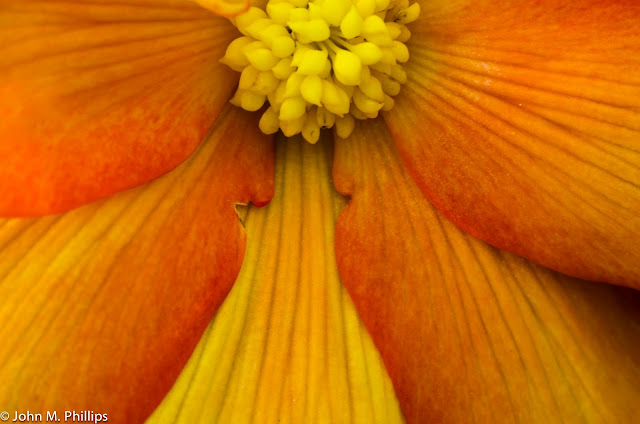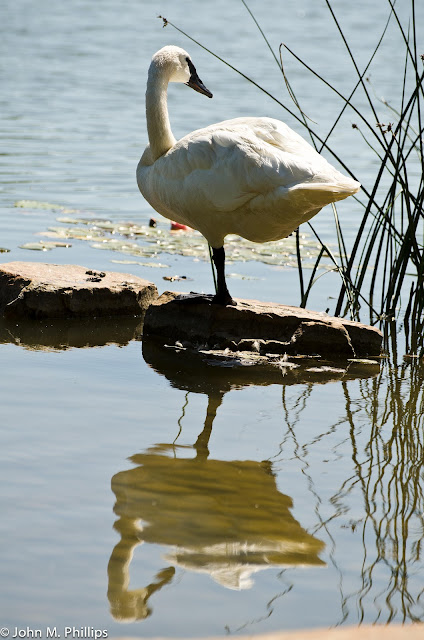On this night, the featured cars were Corvettes, and there were perhaps 25-30 classic Corvettes in the parking lot. However, all other classic cars were also welcome, and there were perhaps another 20-30 classic or near-classic cars in attendance.
By the time I returned with my camera, it was perhaps an hour before sunset. There was still ample light, but it was declining over the 45 minutes or so I spent taking photos of the cars. I didn't have the courage to bring my tripod, so all of the shots were hand-held. Even so, I was able to start with the ISO set at 100. However, at some point in the evening I started increasing the ISO to 500 or 800 to keep the shutter speed high enough. I took all of the shots at f/9. So much for technical stuff.
Probably the first car that caught my eye was a dark cherry Corvette.
As usual, I found myself taking shots of only portions of the cars. (That wasn't always the case, as is shown below.) Even as I was doing this, I was asking myself why I have this penchant for such "partial" shots. I think in part I am trying to exclude extraneous, perhaps distracting, elements from the photo. In part, too, I am trying to capture the car's artistic lines. After all, one of the primary attractions of these cars is the fact that they have come to represent art. For the most part these cars had been beautifully restored, and the high gloss that their owners had brought out in the sheet metal was nicely reflecting the surroundings, accentuating the curves in their lines.
Another car that caught my early attention was a dark green Austin Healey.
This shot was something of a mistake: I should have taken it from much lower down and should have panned out far enough to include the entire front of the car. (I did get better later in the shoot, I think.) This car, too, had great lines, I thought, and had been lovingly restored. Here are some more "partial" shots.
I did take some pains to ensure that my camera was directly on the car's mid-point. I have learned that if you are trying to get a straight-on shot, you need to take care to position the camera directly on the midline--no amount of cropping will compensate otherwise.
Here is another, taxi-yellow Corvette.
Just OK.
In this last shot, it would have been better if the entire Corvette name was visible. My experience was that the lighter colored cars did not show as well as the darker ones, because reflections in the darker sheet metal were more pronounced, providing a better idea of the curves and just in general providing more visual interest.
That was illustrated in the following two Corvettes, one white and one black. Here are a couple of shots of a white 1959 Corvette.
See, I did manage to get the entire front end of this Corvette in the shot by taking it at about 18 inches off the ground. It helped a lot that this car was at the back edge of the parking lot and there were no distractions, such as people, behind it.
And here is a 1965 Sting Ray. Its owner had advised me to focus on the backend of the car. And he was right--that was the unique feature of this model of Corvette.
Even though this car was next to the white 1959 Corvette (which is partially visible in the right portion of the image) and therefore also parked at the edge of the lot, I was able to sit on the ground behind the car and capture the entire backend by panning out to as wide angle as my lens would go. But note the "junk" in the background. Not the worst thing, and perhaps it is good to include some of the "scene" in the overall series of shots. Although this car's backend could be considered "controversial" in design, I think it makes for a great photo. Here is a closer image that eliminates the background distractions.
I like this shot quite a lot, in part because it is limited to the unique lines of the car and in part because I was able to include the insignia as part of the image. I wound up cropping this shot a little narrower vertically to eliminate everything I wanted to. This car was black, but it has a bit of a blue cast reflected from the evening sky.
Keeping with that dark vs. light theme, here are some more black vs. white cars. First, a detail from a Porsche (I think).
And here is an MG from the 1960s . . .
Compared with a black Austin-Healey.
Here is another red Austen-Healey, including a shot of the interior.
For some reason, the color on this second shot of a portion of the trunk (boot in England) seems pretty flat.
There were two Amphicars at the show. These vehicles are, frankly, hideous and have been designated among the 50 worse car ideas of all time. Besides their "style," they were very underpowered and lacking in aerodynamics. They had one thing going for them: They were amphibious and could go on water as well as on land. No need to buy a separate boat if you owned one of these guys.
Their tail fins give them away as products of the early 1960s, and in fact they were produced during the years 1961-65. I think the anchor on the front of the aqua one says it all--clunker.
Back to the legitimate cars. Not all them were classic; some were just fast.
Here is a Cobra.
I really liked how clean the surfaces appear in this second shot.
And here is a Ford GT.
Here is an Excalibur. I'm not sure how old this car is. Its lines give it a classic look, but it may in fact be of recent vintage. Very attractive, I thought.
Finally, as the light was starting to fail and I was getting ready to leave, I spotted this Jaguar, which must have been from the late 1930s. It was superb--my favorite of the show.
And I did take one shot of the car's backend, which seems oddly diminutive compared to the massive look of the front.
The car has California plates, but I feel confident that it was not driven here from its home state.
Taken with my Nikon D7000 with Nikkor 24-120 mm f/4 lens.


























































